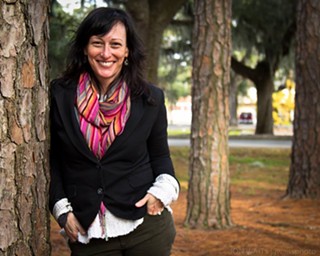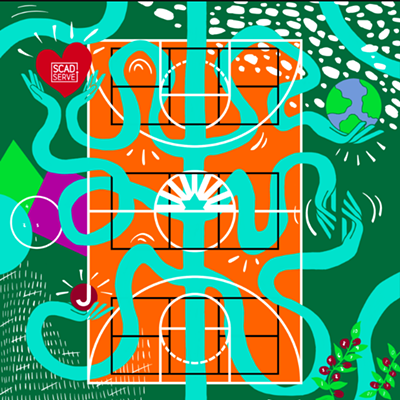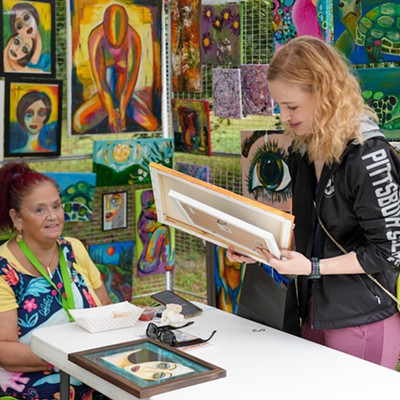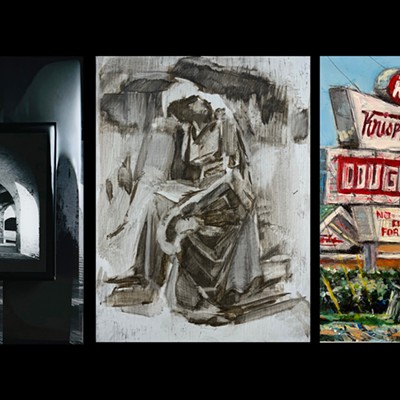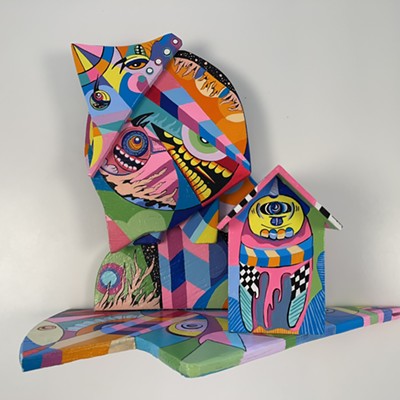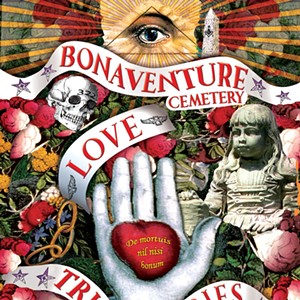Something new is glowing in Savannah’s western skyline.
The 86–foot glass tower of the SCAD Museum of Art lit up for the first time last week, rising up out of MLK Jr. Boulevard like a great green guidepost.
Indeed, SCAD is leading the city’s cultural future: The sleek, clean line of the tower is erected from a historic foundation, effectively showcasing the college’s global art influence while embracing Savannah’s past as one of the busiest slave outposts in South.
Built from the ruins of the original headquarters of the Central of Georgia Railroad, the museum “resurrects and respirits” the only surviving antebellum railroad depot in the country.
In a speech Friday afternoon, SCAD President Paula Wallace called it an example of “living history,” citing the story of William and Ellen Craft, escaped slaves who passed through the train depot on their way to freedom. Housing selected works from Dr. Walter O. Evans that date as early as the 1800s, SCADMOA pulls from the largest collection of African American art in the world.
Every brick is original to the site, collected from crumbling piles that have sat for decades. Heart pine beams were claimed from a collapsing warehouse and reclaimed for panels that adorn the 250–seat poured concrete auditorium.
Lead architect Christian Sottile spoke of the layering of centuries that happen in a city where so much has passed, comparing Savannah to his hometown of Florence, Italy. “The museum is an ideology in action,” he said. “It will enrich the cultural fabric of this singular environment.”
Though its constructive identity pays due to its local point in history, once inside, SCADMOA opens up into the expansive, fast–paced consciousness of contemporary art and design. The first thing that greets visitors is a gargantuan, 12–foot touch pad that offers information and color images of the exhibitions, artists and events. The entire western wall is covered with Trenton Doyle Hancock’s trippy 3–D wallpaper, as if an alert that while the building itself may span centuries, the art within is—with a few exceptions—rooted in modern times.
Executive Director of Exhibitions Laurie Ann Farrell and Chief Curator of Exhibitions Isolde Breilmaier came up with a diverse lineup to open SCADMOA, showcasing well–known with emerging artists through a variety of media.
“This is a labyrinth of creative disciplines,” said Farrell.
Farrell and her staff installed each piece with regard to spatial sensibility and subject, creating a flow through the galleries. Selected works from Kehinde Wiley, including oversized portraits of young urban giants, occupy a space worthy of the enormity of its subjects. Kendall Buster’s billowy, biology–inspired sculpture New Growth: Stratum Field hangs above, low enough to invite necks to drop for a closer inspection.
“When the artists came in and saw their work, their jaws dropped, they were so moved by how we’ve presented their work,” said Melissa Messina, Senior Curator. “As a curator, that’s when you know you’re doing a good job.”
Bill Viola’s 1996 The Crossing, a video installation mirroring a man walking towards opposite fates has been shown around the world and returns to where it was first commissioned. There have been long strides in video technology since its creation, but Messina points out that the dating of the piece has value in itself. “It’s important for students to see the progression of video art.”
Art, fashion and culture collide in the André Leon Talley’s High Style gallery, or as one visitor called it, “my new happy place.” Curated by the legendary Vogue editor, the exhibit is a fashion groupie’s fantasy, juxtaposing the elegance of a sea foam green Oscar de la Renta organza gown with Zac Posen’s goth–like, spidery sheath created for actress Christina Ricci. Marc Jacobs, Karl Lagerfeld and Manolo Blahnik are all represented—the latter in the Carrie Bradshaw’s iconic satin pumps from the film Sex and the City.
The back gallery is the domain of sculptor Liza Lou, presenting an uncanny ability to imbue the mundane with the stupendous in her collection Let the Light In. Intricate wall tapestries echoing Islamic prayer rugs become a testament to labor and devotion when revealed to be composed of tiny glass beads. Similarly deserving of awe are coiled ropes sheathed in beads the size of a head of a pin that are a mile long when unraveled, and Gather Forty, an enormous honey–hued floor installation utilizing a million more gold–plated beads.
Not to be missed is Lou’s masterwork—not in the gallery, but outside in the museum courtyard. Inside a vintage silver aluminum trailer, accommodating only one viewer at a time, is an entire world created with her signature glass beads: From the zebra bedspread to the small trailer kitchen to a coffee table cluttered with liquor bottles and ashtrays, a narrative emerges in the sparkle of so many teeny, tiny grains.
Touted as a “teaching museum,” the building has 12 classrooms on the second floor where SCAD students will explore the “labyrinth” of creativity. But the museum is as much a resource for the school as it is an offering to the community, what President Wallace calls a “a collective wellspring of ideas and inspiration.”
The art inside may rotate through the years, but there is a sense of permanence that emanates from the museum itself, coming from all those Savannah gray bricks created by enslaved laborers combined with newly-poured concrete and steel girders. Even if you only consider the beam of light it radiates for miles, SCAD’s Museum of Art will have an undeniable impact on Savannah for many years to come.


